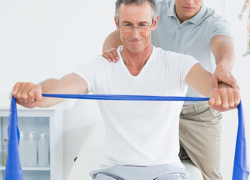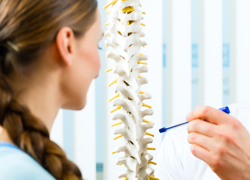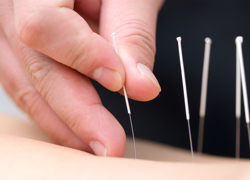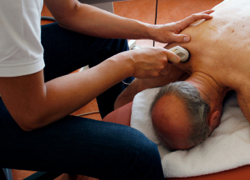
Home exercise programs are an integral part of restoring optimal physical function. Key areas to address are joint mobility and stability, soft tissue flexibility, strength, balance, agility and coordination. Whenever there is pain there is often dysfunctional movement patterns. Corrective and progressive exercises allow for retraining of optimal movement patterns that facilitate return to pain-free daily function and sport.

As part of empowering the patient, education is provided regarding injury mechanisms, expected time frames for healing and recovery, self care strategies home exercise programs and expected outcomes. In the case of injury prevention, strategies can be developed according to the individual and evaluation of relevant risk factors.

Manual therapy is a therapeutic approach that utilizes a variety of techniques such as joint mobilizations or manipulations, neural mobilizations, soft tissue techniques and stretching in order to restore optimal function and mobility. Techniques are generally hands on and will often require the patient to participate in muscle activation patterns to regain range of motion and stimulate muscle activation.

Spinal manipulation involves the use of high velocity and low amplitude techniques to move vertebral and rib joints that are adhered or stuck. Only healthcare practitioners with accepted qualifications can perform these techniques. Louise is on the Restricted Activity roster of Physiotherapy Alberta and is allowed to practice Spinal Manipulation.
Louise was accepted as a Fellow of the Canadian Academy of Manipulative Physiotherapy in 1999.

The use of needles has become more commonplace in physiotherapy as its benefits include pain relief, promotion of healing and release of muscle tension.
Medical Acupuncture is the Western approach to Traditional Chinese Medicine. This needling technique utilizes traditional acupuncture points to stimulate the nervous system. Dry Needling is a subset of acupuncture that targets tight muscle bands called motor points in order to release tension, decrease pain and restore mobility.
Only healthcare practitioners with accepted qualifications can perform these techniques. Louise is on the Restricted Activity roster of Physiotherapy Alberta and is authorized to practice acupuncture and dry needling. Louise received certification to perform acupuncture by The Acupuncture Foundation of Canada (now know as Acupuncture Canada) in 2003.

Therapeutic Ultrasound uses high frequency sound waves to stimulate circulation, promote tissue metabolism and healing responses, pain control and reduction of muscle tension.
Electrotherapy devices such as Electrical Muscle Stimulation (EMS) and Interferential Current (IFC) use electrical currents to activate muscle promote circulation and decrease pain.
Mechanical Traction is a device that creates a traction pull of the cervical or lumbar spine to decrease compression at joints. It is generally used to decrease nerve compression in the spine which can cause pain and altered sensation such as numbness or tingling

IMS is used to treat neuropathic pain which is caused by irritation or pressure on the nerves causing muscles to become shortened and hypersensitive. Many chronic pain conditions are caused by neuropathy and can occur in the absence of inflammation or tissue damage. Since neuropathic pain can exist without ongoing inflammation or tissue damage, painkillers and anti-inflammatory medications may provide only temporary relief or have no effect at all. In addition, x-rays, CT’s, MRI’s and other diagnostic tests may not show any visible signs of injury.
IMS affects neuropathic pain by desensitizing affected nerves and muscles using acupuncture needles. The needle activates a reflex causing the muscle to release and in doing so, eases the pain. Inserting the needle also creates a minor therapeutic injury to the area, stimulating the body to increase local circulation and activate its healing systems. The technique is particularly effective for deep muscles that can be difficult or impossible to reach with other forms of treatment.
If you are a good candidate for IMS treatment, sessions are usually scheduled once per week to allow time for the body to heal between sessions. The number of sessions required varies, depending on factors such as length of time a problem has been present, age and general health. In published studies of patients with low back pain, the average number of IMS treatments required was 8.2. In some cases, especially if the pain is of recent onset, one or two treatments may be sufficient.